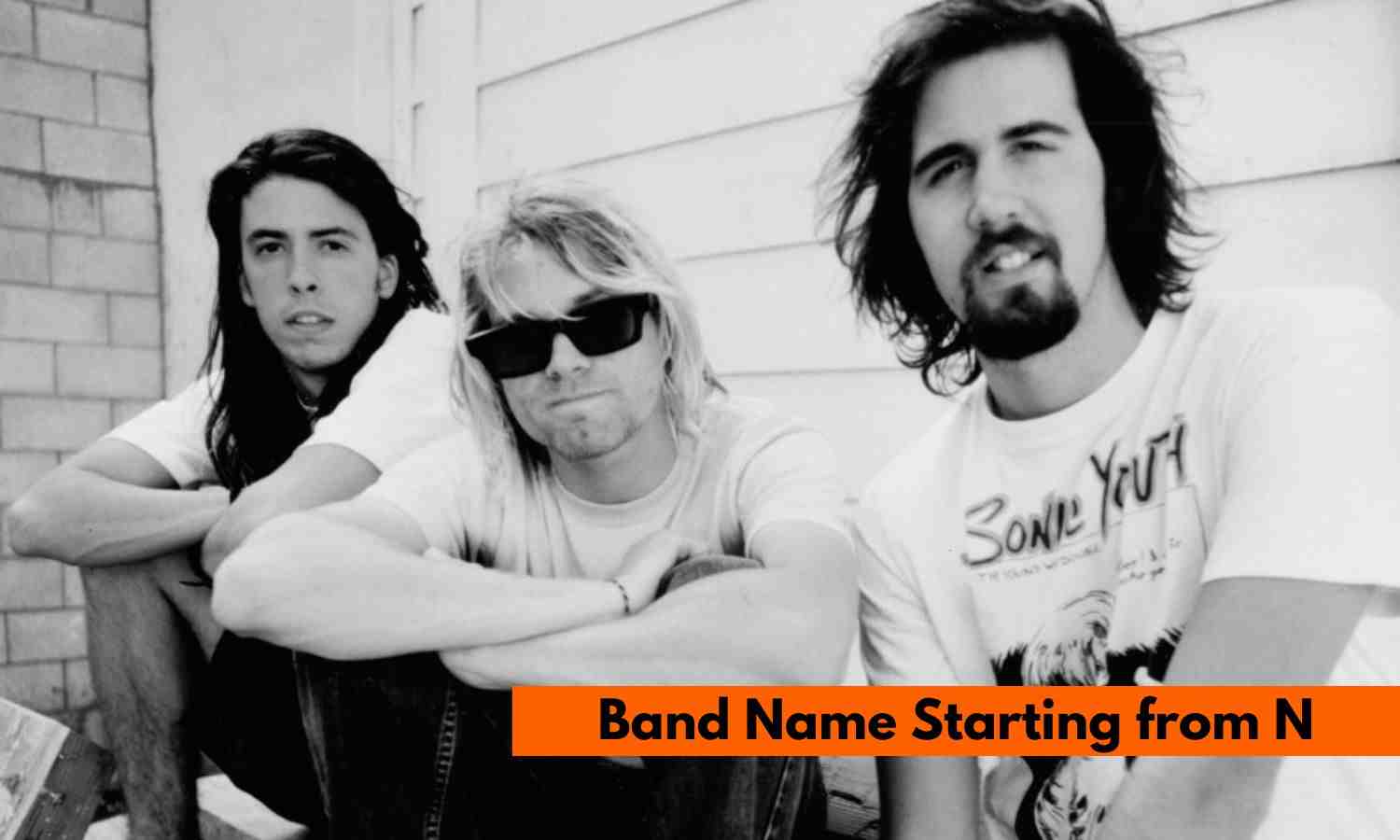Folk music has made an impressive comeback over the last couple of decades, capturing the hearts of music fans across the globe. A new wave of artists like Mumford & Sons and Fleet Foxes have revived this classic genre, blending traditional folk elements like banjos and harmonies with a modern, contemporary style.
However, this folk revival has sparked a lot of debate around authenticity. Are these new bands truly keeping the spirit of folk music alive with their grassroots sound and storytelling? Or are they just cashing in on a trendy fad, letting mainstream commercial success water down the genuine folk experience?
As these artists have crossed into the mainstream, some worry they’ve compromised their artistic integrity for fame and sales numbers. This exploration looks at the journeys of influential folk revival bands to examine if they’ve managed to craft music that feels relevant and resonant today, while still staying true to folk’s rich roots and traditions amidst the pressures of evolving sounds and commercialism.
Here is a table for the 10 Best folk music bands:
| Band | Origin | Genre Fusion | Frontman/Lead Members | Defining Characteristics |
|---|---|---|---|---|
| Mumford & Sons | West London, UK | Folk-Rock, Indie | Marcus Mumford | Banjos, Anthemic Choruses, Emotive Lyricism |
| The Lumineers | Denver, CO, USA | Americana, Indie | Wesley Schultz, Jeremiah Fraites | Gravelly Vocals, Acoustic Guitars, Storytelling |
| Fleet Foxes | Seattle, WA, USA | Folk-rock, Baroque Pop | Robin Pecknold | Lush Harmonies, Pastoral Lyrics, 60s Influences |
| Bon Iver | Eau Claire, WI, USA | Indie Folk | Justin Vernon | Falsetto Vocals, Sparse Production, Confessional |
| Of Monsters and Men | Reykjavík, Iceland | Folk-Pop | Nanna Bryndís Hilmarsdóttir, Ragnar Þórhallsson | Nordic Folklore, Anthemic Melodies, Tribal Rhythms |
| The Avett Brothers | Concord, NC, USA | Punk-Bluegrass | Scott Avett, Seth Avett | Raw Vocals, Banjo/Guitar Riffs, Sibling Harmony |
| The Head and the Heart | Seattle, WA, USA | Indie Folk | Josiah Johnson, Jonathan Russell | Lush Harmonies, Emotional Lyrics, Cathartic |
| Lord Huron | Los Angeles, CA, USA | Americana, Indie | Ben Schneider | Cinematic Storytelling, Wanderlust Themes |
| The Decemberists | Portland, OR, USA | Literary Folk-Rock | Colin Meloy | Historical Fiction, Erudite Lyrics, Theatrical |
| Iron & Wine | Miami, FL, USA | Indie Folk | Sam Beam | Whispery Vocals, Poetic Lyrics, Intimate |
10 Best Folk Music Bands
1. Mumford & Sons
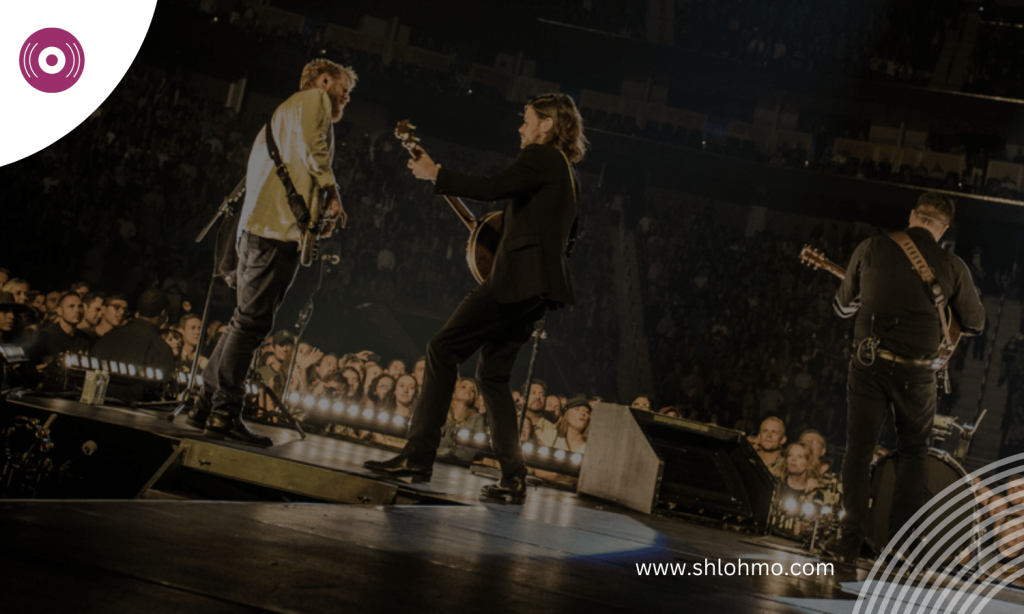
This West London quartet took the music world by storm with their 2009 debut “Sigh No More.” Their rousing folk-rock sound blended banjos, anthemic choruses, and heartfelt lyrics about love, loss, and spirituality.
But were they truly reinventing the genre or just a fad?
While their fusion of folk traditions with indie energy resonated widely, especially through their charismatic live performances, the critics questioning their authenticity raised some valid points. Their polished production and stratospheric commercial success undermined the grassroots, raw essence that defines traditional folk music.
Additionally, their rapid journey from West London obscurity to global stardom reeked more of a carefully manufactured hype than an organic rise for some observers. However, one could argue that by adeptly bridging vintage folk instrumentation with contemporary indie rock sensibilities, Mumford & Sons authentically reinvented the genre for a new generation.
Some more things to know about Mumford & Sons:
- Their name pays homage to the fact that founders Marcus Mumford and Winston Marshall were playing folk music in the West London suburb of Mumford.
- Their breakout single “Little Lion Man” was inspired by an argument between Mumford and his wife.
- They were part of the “West London Folk Scene” along with artists like Noah and the Whale and Laura Marling.
- Mumford & Sons won the Album of the Year Grammy for “Babel” in 2013.
- Their music videos often incorporate vintage aesthetics and dramatic narratives.
2. The Lumineers

Hailing from Denver’s music scene, The Lumineers struck platinum with their 2012 self-titled album. Led by Wesley Schultz and Jeremiah Fraites, their American-indie blend painted poetic portraits of wanderers and heartlanders through Schultz’s distinctive, gravelly vocals and prominent use of acoustic guitars and percussion. Hits like “Ho Hey” and “Stubborn Love” made them stars, evoking a sense of wanderlust and nostalgia.
But did their “hobo-chic” image authentically reflect their experiences? Or was it clever marketing tapping into America’s romantic ideals?
The skeptics arguing their aesthetic was an inauthentic ploy to capitalize on cultural trends have a point – the band’s middle-class upbringings seem to contradict the hobo-chic vibe they projected. However, one could counter that their ability to tap into the timeless American archetype of the restless rambler through Schultz’s evocative storytelling and the band’s rootsy sound made their portrayal authentic, regardless of their backgrounds.
Some more things to know about The Lumineers:
- The band’s name was inspired by the free box luminarias given out during the 9th annual Crested Butte Lupine Festival.
- Frontman Wesley Schultz worked as a cook and salesman before the band’s success.
- Their song “Ho Hey” was rejected by Spotify’s playlist curators before becoming a hit.
- The Lumineers recorded their debut album in a Seattle basement on a tight budget.
- They’ve cited Tom Petty and Bob Dylan as major influences on their songwriting.
3. Fleet Foxes
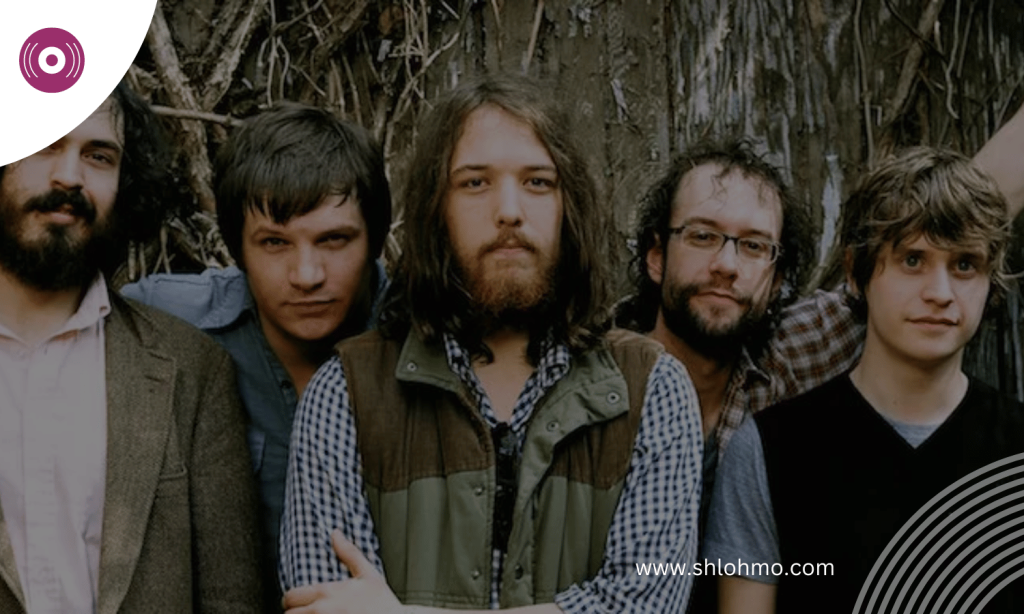
This Seattle group, fronted by Robin Pecknold, emerged in 2008 with a lush, harmonious sound evoking Pacific Northwest forests. Their debut “Fleet Foxes” was a critical darling, praised for its:
- Intricate harmonies
- Lush instrumentation (guitars, mandolins, percussion)
- Lyrics conjuring woodland wanderings and spiritual introspection
But did they craft a genuine new pastoral folk? Or were they merely skilled imitators of the 60s revival, drawing comparisons to bands like Fairport Convention and Pentangle?
The argument that Fleet Foxes were simply derivative revivalists has some merit – their baroque folk-rock style did closely mirror the 60s folk-rock renaissance, both sonically and thematically.
However, by channeling that vintage aesthetic through a distinctly modern, emotionally resonant lens, one could make the case that they authentically revived and updated the genre’s rich artistic spirit for a new generation.
Some more things to know about Fleet Foxes:
- Frontman Robin Pecknold grew up listening to his parents’ vinyl collection of 60s folk-rock.
- The band’s name was inspired by a childhood nickname Pecknold had for his crew.
- Their 2008 Sun Giant EP was recorded in a basement and helped kickstart their career.
- Fleet Foxes took a 6-year hiatus after their acclaimed 2011 album Helplessness Blues.
- They incorporate unusual instruments like zanzithars and Tibetan singing bowls into their sound.
4. Bon Iver

After a sojourn in a remote Wisconsin cabin, Justin Vernon poured his heartbreak into 2007’s “For Emma, Forever Ago.” His aching falsetto and sparse production made an indie folk masterpiece of raw vulnerability and emotional resonance.
But was Vernon truly a confessional poet baring his soul? Or a manufactured backstory to boost mystique?
While the remote cabin narrative did arguably amplify the album’s romantic mystique, to dismiss Vernon’s outpouring as inauthentic seems reductive.
The visceral intimacy and searing emotional honesty palpable throughout “For Emma, Forever Ago” argues strongly that he was indeed authentically exorcising personal demons and profound heartbreak through his confessional songwriting. As his sound revolutionized, Vernon continued baring his soul, suggesting an enduring authentic artistic voice.
Some more things to know about Bon Iver:
- Frontman Justin Vernon recorded For Emma, Forever Ago while isolated in a cabin in Wisconsin.
- The name “Bon Iver” is derived from the French phrase “bon hiver” meaning “good winter.”
- Vernon suffered from severe insomnia and anxiety during the making of the album.
- Kanye West was a major collaborator on Bon Iver’s 2011 self-titled album.
- The band incorporates elements of folk, indie rock, ambient and electronic music.
5. Of Monsters and Men

This Icelandic band’s 2011 debut “My Head Is an Animal” was a global folk-pop smash, propelling them to the forefront of the revival. Their rousing anthems blended Nordic lore with irresistible melodies and emotionally resonant lyrics exploring love, adventure, and nature.
But did they skillfully fuse their heritage with pop accessibility? Or did mainstream success compromise their folk roots?
There’s no denying Of Monsters and Men adeptly infused their music with distinctly Icelandic mythological and folkloric motifs, from their rousing tribal rhythms to their lyrical invocations of Norse nature imagery. By skillfully interweaving these indigenous elements with insanely catchy pop hooks, one could argue they authentically brought their rich Nordic heritage to the mainstream without compromising its essence.
Some more things to know about Of Monsters and Men:
- The band’s name comes from a Spanish book about human cruelty and discrimination.
- They incorporate trumpet, accordion, and percussive foot-stomping into their sound.
- Of Monsters and Men’s debut album was recorded in a converted basement studio.
- The band members come from the small Icelandic town of Keflavík.
- Their song “Mountain Sound” was inspired by lead singer Nanna Bryndís Hilmarsdóttir’s childhood.
6. The Avett Brothers
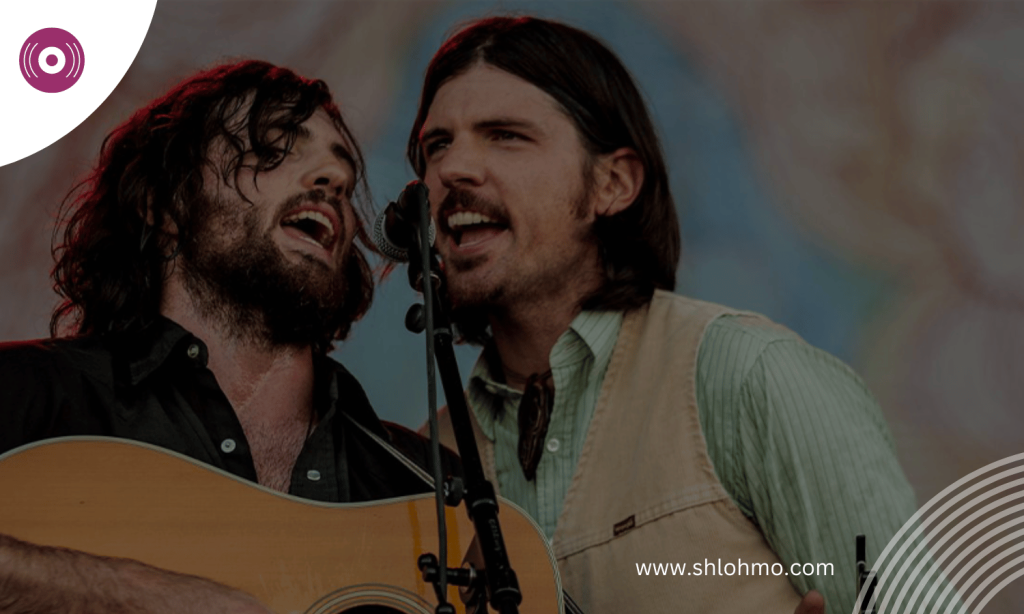
These North Carolina siblings blend bluegrass grit with punk energy, creating a raucous fusion of genres. Scott and Seth Avett’s raw, emotive vocals and driving banjo/guitar riffs explore life’s complexities with lyrics delving into love, loss, and the human experience. Their live shows are a sweat-soaked celebration of roots traditions infused with a modern edge.
But have they authentically revived and reinvented Americana? Or is their genre-mashing more of a commercial calculation to appeal widely?
By channeling the authentic, no-frills spirit of traditional American roots music like bluegrass and folk through a refreshingly modern, high-energy punk lens, The Avett Brothers make a strong case that they are indeed reinvigorating Americana for a new generation. Their ability to blend grit and grace with palpable sibling harmony reinforces the genuine, from-the-heart nature of their unique sound.
Some more things to know about The Avett Brothers:
- Scott and Seth Avett were raised on a mixture of gospel and punk rock music.
- They incorporate a wide range of instruments like banjos, cellos, and keyboards.
- The brothers met bassist Bob Crawford at a summer camp when they were kids.
- The Avett Brothers have been making music together for over 20 years.
- Their music videos often incorporate a vintage, nostalgic aesthetic.
7. The Head and the Heart

Emerging from Seattle, this emotive indie folk band is led by the dynamic duo of Josiah Johnson and Jonathan Russell. Their lush harmonies, driving rhythms, and heartfelt lyrics resonate deeply, often exploring complexities of love, loss, and self-discovery with cathartic vulnerability. Songs like “Rivers and Roads” are infectious yet emotionally profound.
But do they tap into genuine emotion? Or is their sound too calculated for mass appeal?
While their widespread success does open them to charges of being overly commercial, the sheer emotional intensity and hard-hitting lyrical resonance of their songwriting argues strongly for its authenticity.
By fearlessly excavating intensely personal yet universally relatable emotional terrain with both remarkable poignancy and remarkable melodic craft, The Head and the Heart make a compelling case for their status as genuine heart-on-sleeve poets of indie folk.
Some more things to know about The Head and the Heart:
- The band formed after a series of open mic nights at a Seattle pub.
- Their debut album was self-released before being re-issued by Sub Pop Records.
- They incorporate violin, keys, percussion, and three-part vocal harmonies.
- The Head and the Heart’s name comes from a classic Russian novel.
- Members come from diverse backgrounds like Florida, California, and Richmond.
8. Lord Huron

This LA group, helmed by Ben Schneider, spins cinematic tales of wanderlust and bygone eras through evocative lyrics and lush, atmospheric production. Their immersive live shows, complete with visuals, transport fans to distant realms and eras.
But are they authentic storytellers of Americana? Or is their romanticized style more of a hipster affectation capitalizing on nostalgic longing?
While Lord Huron’s meticulously crafted aesthetic could understandably be perceived as contrived by some, their ability to conjure a specific sense of time and place through Schneider’s descriptive lyricism and the band’s evocative musical landscapes arguably makes them an authentic artistic channeling of the American spirit. By tapping into the timeless allure of open roads, western vistas, and folk tales, Lord Huron has authentically bottled American wanderlust.
Some more things to know about Lord Huron:
- Frontman Ben Schneider created Lord Huron as a multimedia project combining music and visuals.
- The name Lord Huron references one of the five Great Lakes and French explorer Samuel de Champlain.
- Their album artwork often features vintage-style imagery and typography.
- Lord Huron incorporates ambient nature recordings into their atmospheric sound.
- They’ve cited classic rock influences like Ennio Morricone and Fleet Foxes.
[recommended_posts posts=”1477,1491,1545,1585,1644″]
9. The Decemberists
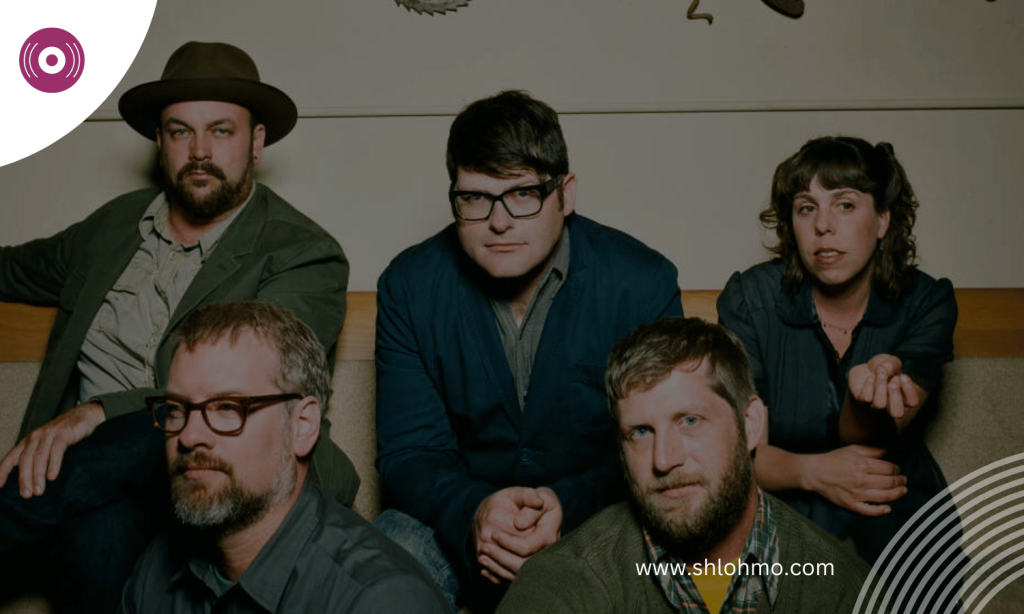
Portlanders The Decemberists blend literate lyrics with historical narratives and indie sensibilities under the guidance of erudite frontman Colin Meloy. Their songs are vivid, compelling explorations of the human experience and condition through the lens of fiction and folklore.
But are they true folk-rock bards? Or do their intellectual ambitions and theatrical flair overshadow emotional truth and authenticity?
While the cerebral, literary nature of The Decemberists’ storytelling could indeed be seen as overthinking things, one could argue that by taking the folk tradition of spinning yarns and imbuing it with a transcendent cultural and emotional richness, they’ve elevated themselves into a rare breed of authentic modern bards. Their ability to merge high-brow erudition with universal human truths in an avant-folk setting is a remarkable artistic achievement.
Some more things to know about The Decemberists:
- The band’s name refers to the Russian Decembrist Revolt of 1825.
- Frontman Colin Meloy was part of the Greenville, SC punk scene before forming the band.
- The Decemberists incorporate instruments like the bouzouki and hurdy-gurdy.
- Their lyrics often draw inspiration from historical events and literature.
- The band has created their fantasy world called Gillian to inspire songs.
10. Iron & Wine

Sam Beam’s whispery vocals and intimate folk defined indie’s early 2000s sound. His poetic, vulnerable lyrics on albums like “Our Endless Numbered Days” felt like private revelations and introspective explorations of the depths of human emotion and experience.
But was he a genuine poet of the human condition? Or did mainstream success erode his raw authenticity over time?
From his earliest whispered confessionals, Beam has consistently stripped his soul bare through his candid, poetic dissections of the human psyche. While his sound has certainly evolved over his career, the fundamental authenticity and emotional resonance has remained a constant. By avoiding the pitfalls of commercial compromise, Beam has cemented himself as an enduring poet of intimacy and vulnerability in the indie folk realm.
Some more things to know about Iron & Wine:
- Frontman Sam Beam’s real name is Samuel Ervin Beam IV.
- He launched his career by making home recordings while working as a film professor.
- Iron & Wine’s name was inspired by a dietary supplement label.
- Beam incorporates slide guitar, upright bass, and gospel influences into his sound.
- He’s collaborated with artists like Calexico, Ben Bridwell, and Jesca Hoop.
Conclusion
The folk music revival rages on, with its influence continuing to shape and inspire the musical landscape. The debates around authenticity show no signs of fading either. From Mumford & Sons’ explosive success to Bon Iver’s soul-baring confessionals, there’s no denying these artists have reignited a love for folk’s powerful storytelling in a whole new generation.
However, the lines have become increasingly blurred between genuine artistic expression and music calculated for commercial gain. Some view mainstream crossover success as a betrayal of folk’s grassroots spirit, while others see it as simply an evolution of the genre, infusing fresh energy and modern relevance.
In the end, deciding what constitutes authentic folk artistry is up to each listener. As the revival continues to morph, embracing new influences and pushing boundaries, fans have to decide for themselves what feels like a true celebration of folk’s timeless soul versus a shallow commodification of its aesthetic.
The journey to defining artistic authenticity will be an eternal exploration and debate as folk music continues to shape-shift with the times. What’s genuine to one listener may feel disingenuous to another. The revival’s legacy remains unwritten.







